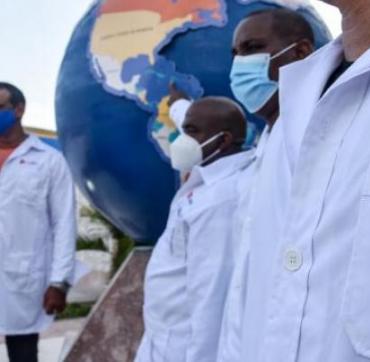Regenerative medicine in Cuba: 19 years later
especiales

It was February 2004 when Cuban hematology experts banked on stem cell procedures. That was the moment when the so-called regenerative medicine was first addressed in the country.
To serve as a pivot for such an innovative process, the National Commission for Regenerative Medicine and Cellular Therapy of the Ministry of Public Health (MINSAP) was created almost simultaneously, under the leadership of the Institute of Hematology and Immunology (IHI).
Since then, the obtaining and separation of stem cells began to be applied in the specialties of orthopedics and traumatology, and angiology.
Many were the benefited patients. Among them, those who presented severe ischemia of the lower limbs and did not respond to conventional treatments, which could result in some type of amputation.
Other promising results have also been obtained in spinal cord trauma paraplegics with spinal cord injury; as well as in Duchenne muscular dystrophy in children.
Regarding orthopedics, specifically, the most effective and rapid progress are found in joint degenerative processes; fundamentally, osteoarthritis of the knee, shoulder, hip, ankles, and affections of the ligaments, muscles and tendons.
After 19 years of work, this specialty has exceeded expectations in the Caribbean nation to gradually approach that of constituted science.
But what is really regenerative medicine?
Consuelo Macías Abraham, PhD in Sciences, head of the National Immunology Group, researcher and tenured professor, describes it as a discipline that is based on the same biological principle that the human organism uses for its self-repair, by replacing damaged cells with healthy ones.
The four fundamental pillars rely on the treatment with stem cells, the use of proteins capable of regenerating injured tissues, tissue engineering that includes the one carried out in the laboratory (in vitro) and that practiced directly on individuals (in vivo), and gene transplantation.
According to the prestigious expert, there are different types of stem cells according to their evolutionary state. In Cuba, the so-called somatic and adult cells are used, which include the pool of mononuclear cells extracted directly from the bone marrow and the subsequent immunological separation.
Likewise, those obtained from peripheral blood are used, after mobilizing stem cells that use mobilizing factors produced by the Center for Molecular Immunology and the Center for Genetic Engineering and Biotechnology.
With the same goal, the so-called VSELs (Very Small Embryonic-Like stem cells) are used, which report magnificent results while being an easier and less expensive procedure, says Macías.
Parallel to these applications, cell therapy has been developed. In this play, the use of platelets and their components stands out, since they constitute true biological bags full of multiple bioactive molecules with regenerative capacity and microbicidal properties.
Other recent successes of this therapeutic method are seen throughout Covid-19. During the terrible pandemic, Dr. Macías led a multidisciplinary team to start a phase 1 clinical trial in patients who suffered lung injuries.
Using quantitative software, the researchers verified that the stem cells, present in the pool of mononuclear cells and obtained from peripheral blood, reduced lesions by 50% with a single infusion of more than 200 million cells. Its effect lasted up to one year after.
Currently, the IHI promotes important projects that will have an impact on the advancement of new treatments for diseases that do not have curative therapies, which will undoubtedly improve the quality of life of thousands of patients.
In fact, this solid scientific backing places Cuba among the first nations with the greatest use and development of regenerative medicine. This was what the researcher and head academic of the Academy of Sciences commented to a specialized magazine in the country.
In May, Havana will host the fifth International Symposium of this branch of medicine. The event —which will take place within Hematology 2023— should validate the search for regenerative technologies that pave the way for dealing with complex ailments.
Translated by Sergio A. Paneque Díaz / CubaSí Translation Staff














Add new comment